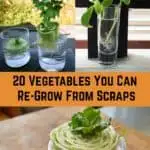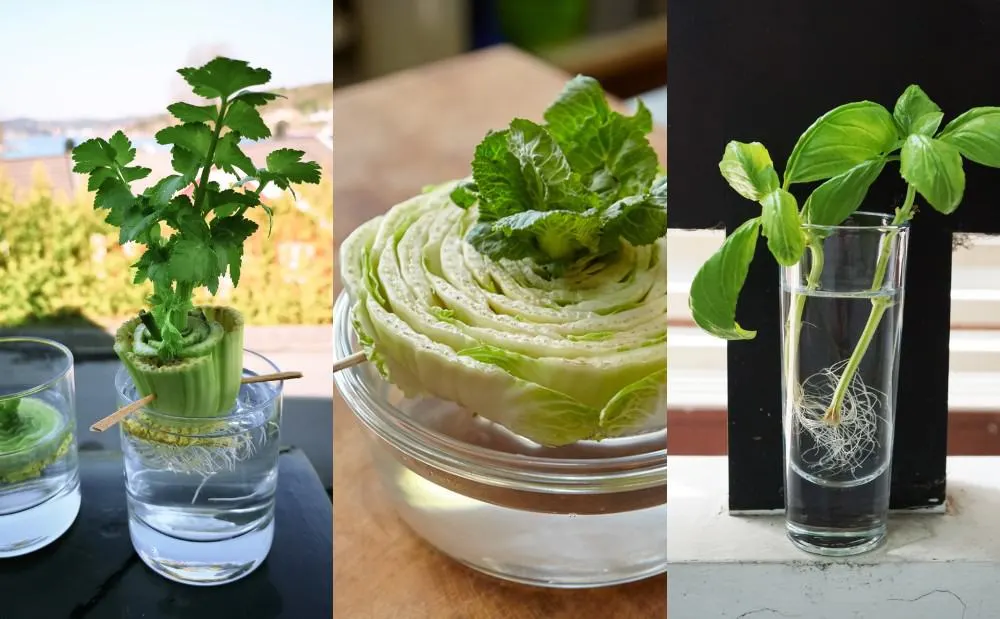
You may be surprised to learn that there are many common vegetables that you grow can re-grow from scraps.
This can be a great money saver, both when it comes to starting a new vegetable plot, and when it comes to your existing food growing efforts.
Making full use of a plants ability to grow new roots and regenerate is a great way to use natural processes to your advantage. It can also help you reduce the amount of food waste that you generate in your home.
Which Vegetables Can You Re-Grow From Scraps?
Here are some of the common vegetables (and herbs) that you can re-grow from scraps:
- Potatoes
- Sweet Potatoes
- Onions, Garlic, Leeks and Shallots
- Celery
- Bulb Fennel
- Carrots, Turnips, Parsnips, Beets and Other Root Crops
- Lettuce, Bok Choi and Other Leafy Greens
- Cabbages
- Basil, Mint, Cilantro & Other Herbs
Let’s take a look at how you can re-grow each of the above using small parts of the plant, or pieces that might otherwise have been added to your compost heap:
Re-Grow Potatoes from Scraps
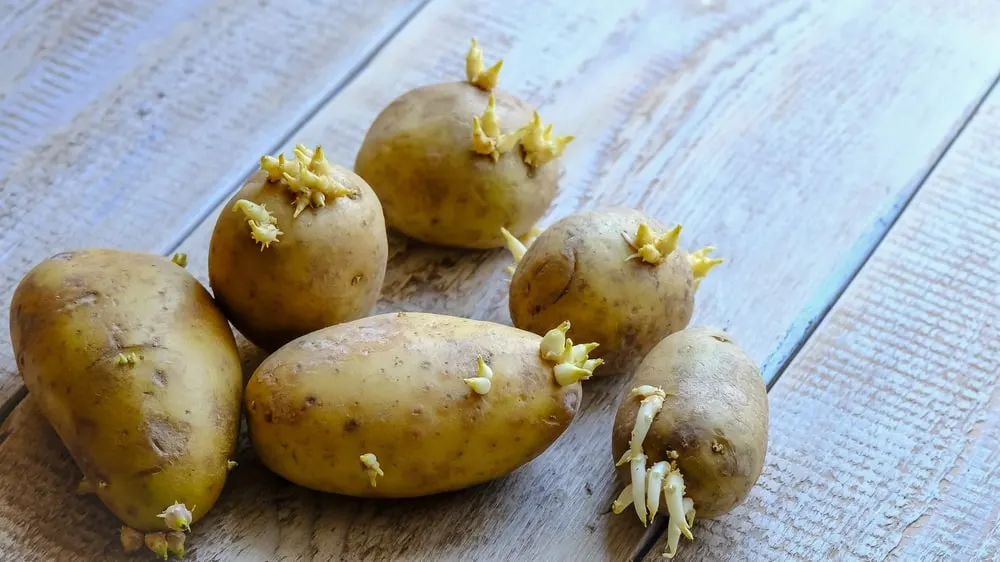
Any chunky sections of potato peel or pieces of potato that include an ‘eye’ on them (those small indentations from which the shoots grow) can be replanted to grow new potato plants.
Simply take your potato scraps, leave them to dry out slightly overnight and plant them in the soil with the eyes facing up in exactly the same way that you would plant seed potatoes.
Re-Grow Sweet Potatoes from Scraps
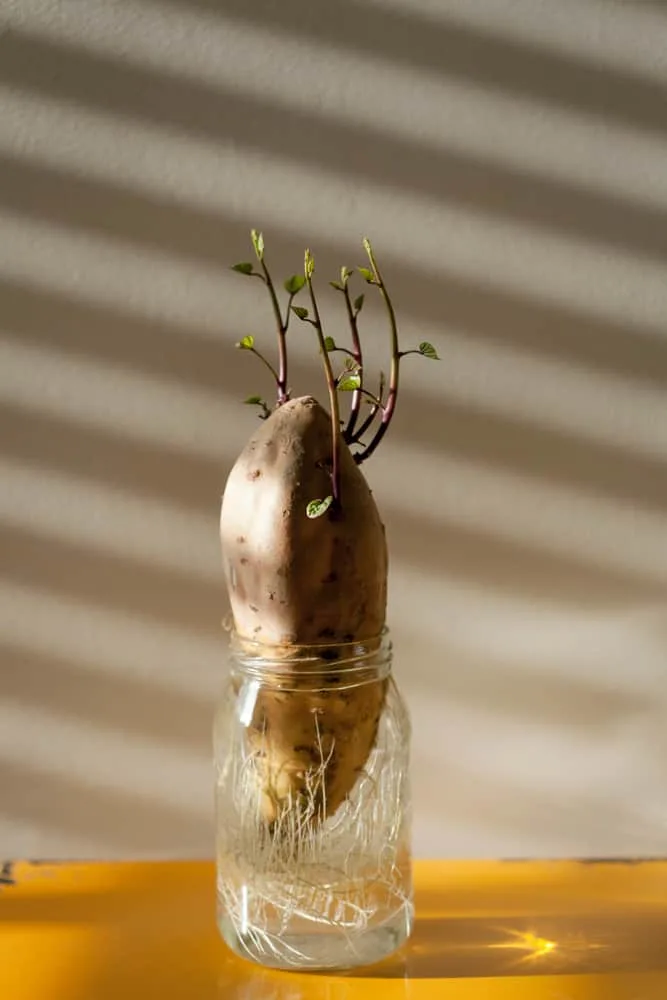
Sweet potatoes can also be regrown from sections in much the same way.
If a sweet potato is a little past its best for eating, you can cut it in half and suspend each half using toothpicks or twigs above a shallow container of water.
Roots should begin to form after a few days. Shortly thereafter, you should see sprouts growing out of the top of the pieces.
Once the sprouts grow to around 10cm/ 4 inches in height, nip them off and place them with their bases in a container of water.
Roots will grow from the base of these shoots. As soon as the roots are growing, you can take these slips and plant them up in the soil.
Scallions, Onions, Garlic, Leeks and Shallots
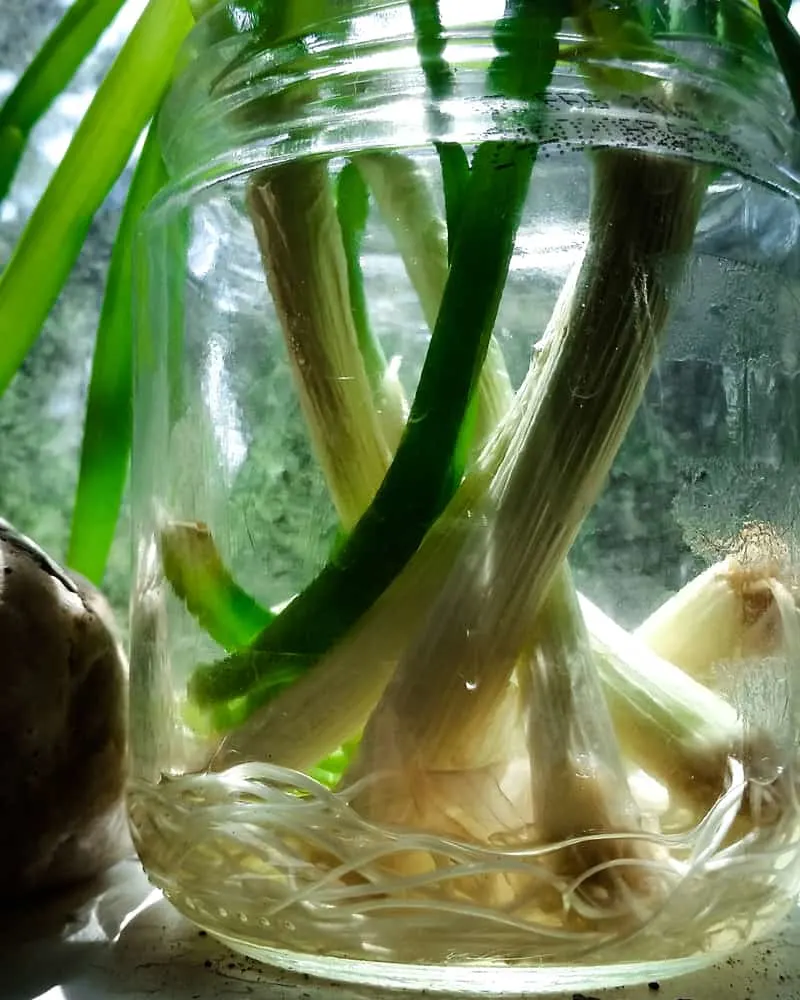
All of these members of the allium family are excellent value for money. You can re-grow all of them from the rooting base of the bulb or stem.
Simply take a small section of the base of a bulb or stem, with the roots attached, and place it in a shallow dish of water.
Fairly quickly, new, green material will begin to grow from this base section.
These re-sprouting sections can then simply be harvested again.
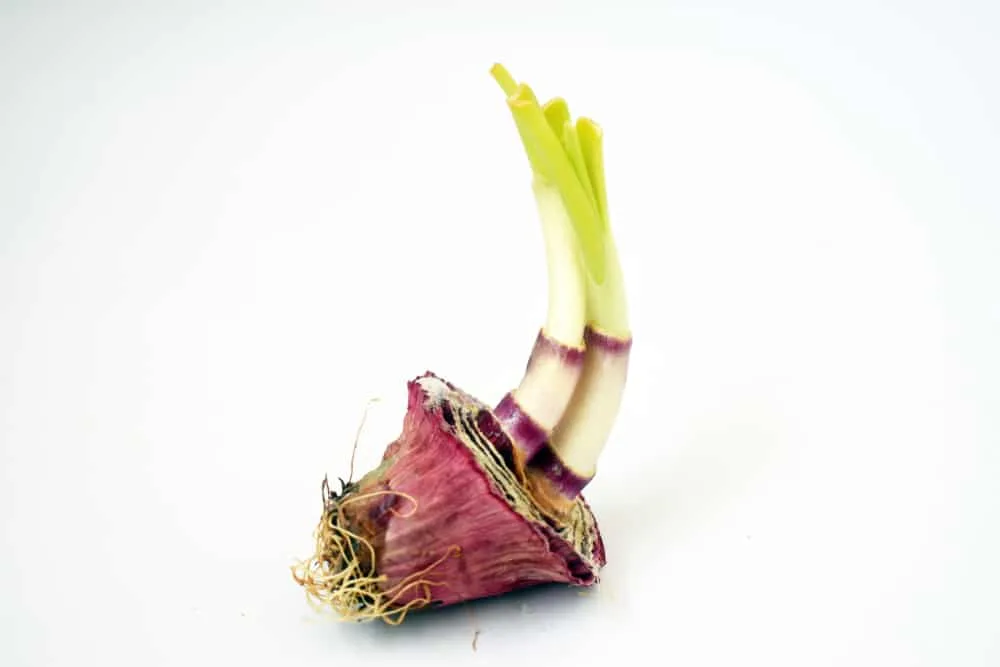
Alternatively, you can plant them out in your garden or in pots placed by a sunny windowsill. Onions and garlic will form new single bulbs, while shallots will divide and form clumps, expanding your harvest each year.
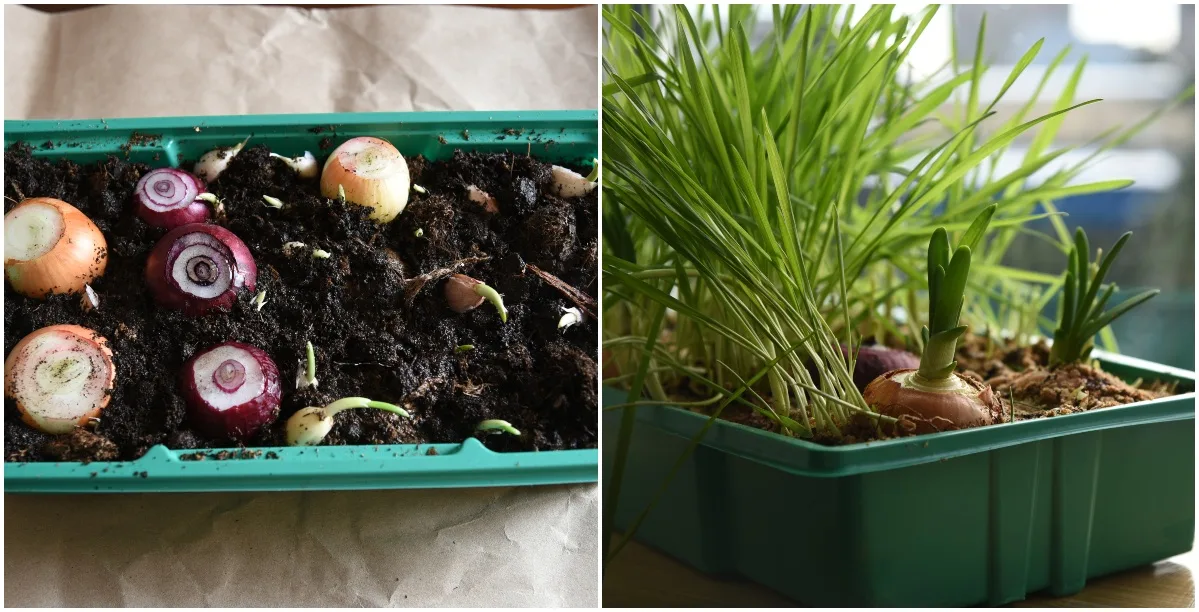
Re-Grow Celery
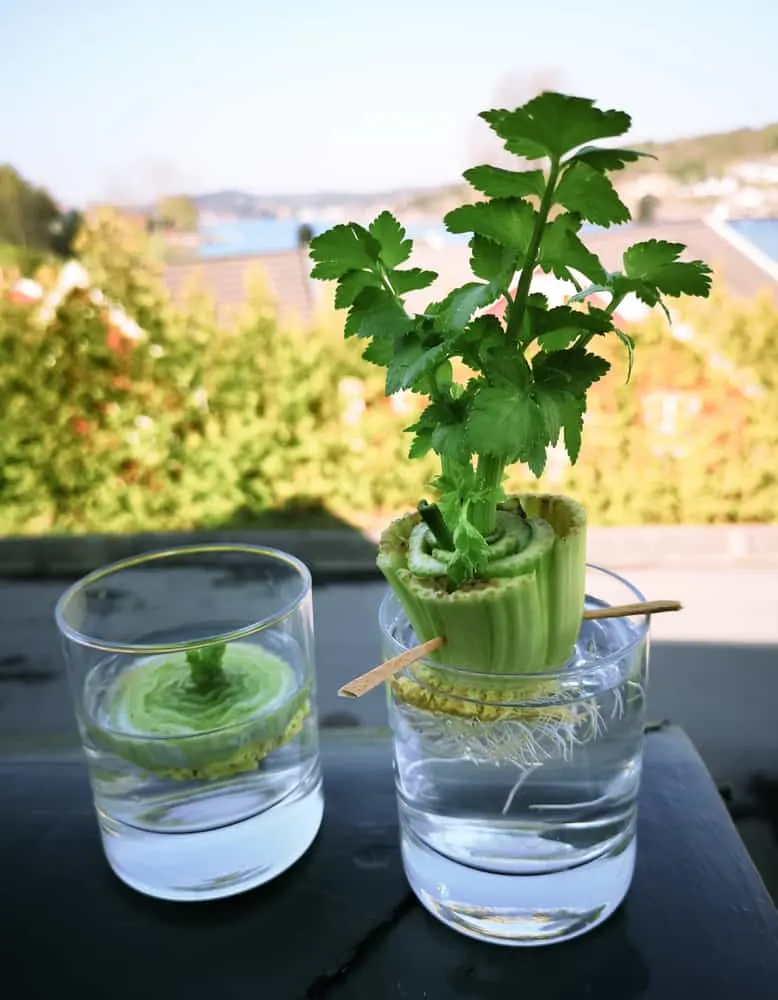
Celery is one of the easiest plants to re-grow from scraps.
You simply have to cut off the bottom of the celery and place it in a shallow container with a little warm water in the bottom. The bowl should be kept in a sunny and relatively warm place.
After a week or so, leaves will begin to grow, and you can wait and harvest these as required, or replant the celery in your garden and allow it to grow into another full-sized plant.
Re-Grow Bulb Fennel
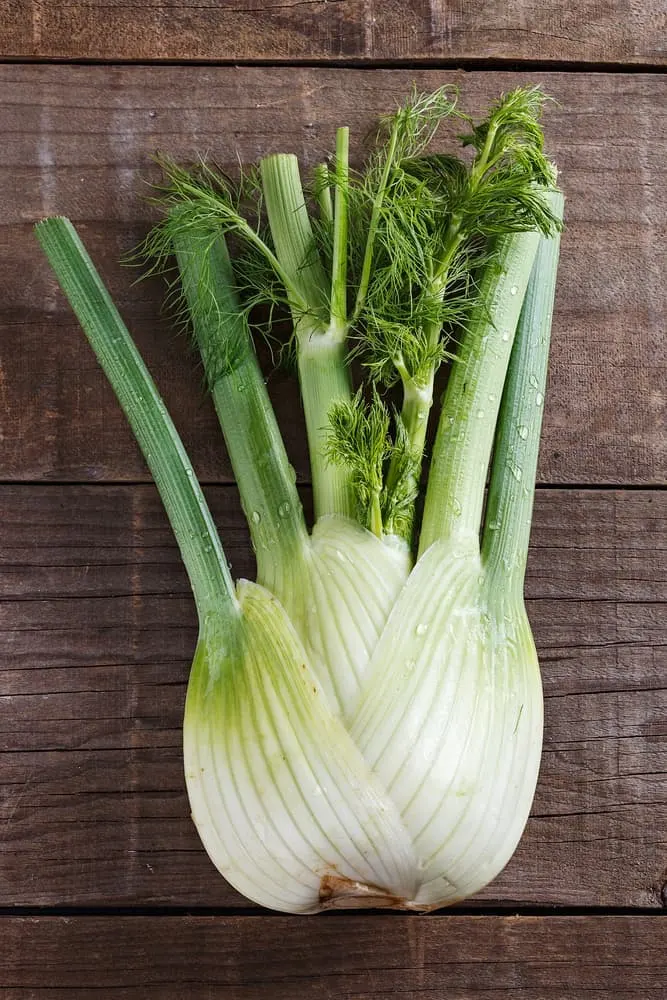
Bulb fennel is another vegetable that can be regrown in much the same way as celery.
Again, simply place the base of the bulb (with root system still existing) in shallow water and wait for the plant to begin to re-grow.
For best results, it is best to keep about 2cm/ 1 inch of the base attached to the intact roots. As soon as you see new green shoots emerging from the middle of the base, you can replant it in the soil.
Carrots, Turnips, Radishes, Parsnips, Beets and Other Root Crops
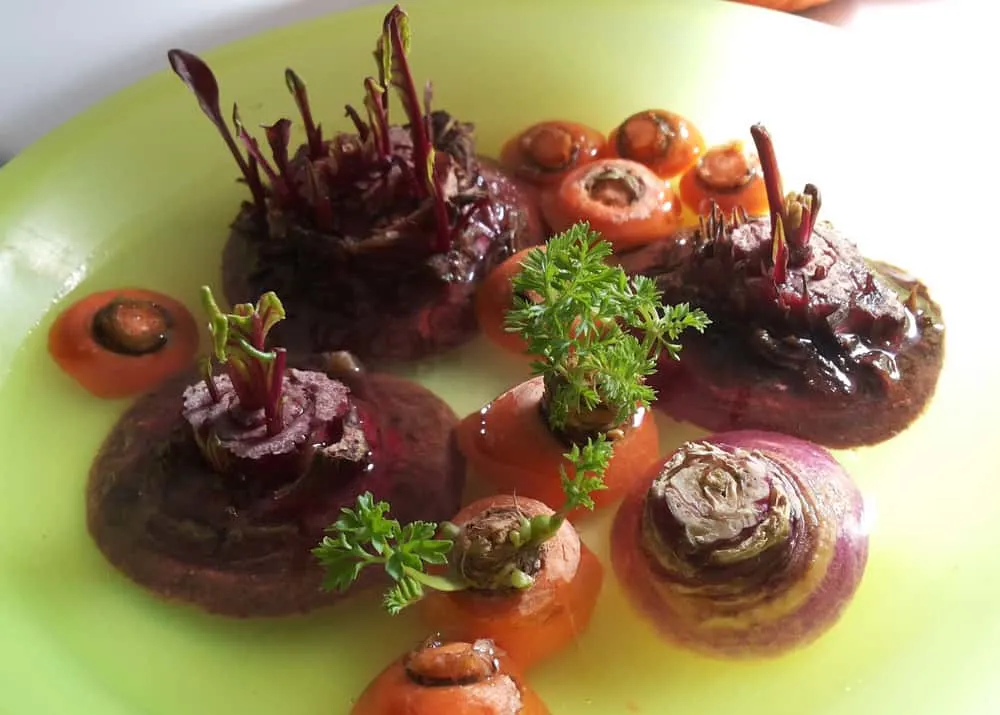
Retaining the tops (where the leaves and stems join onto the root) from carrots, turnips, and other root crops will allow you to regrow them.
Place the tops in a container of water and new, green tops should begin to grow in a matter of days.
You can simply harvest and use these greens as they grow, or you can allow the roots to continue growing until the plants are ready to be transplanted back into the ground.
Lettuce, Bok Choy, Other Leafy Greens
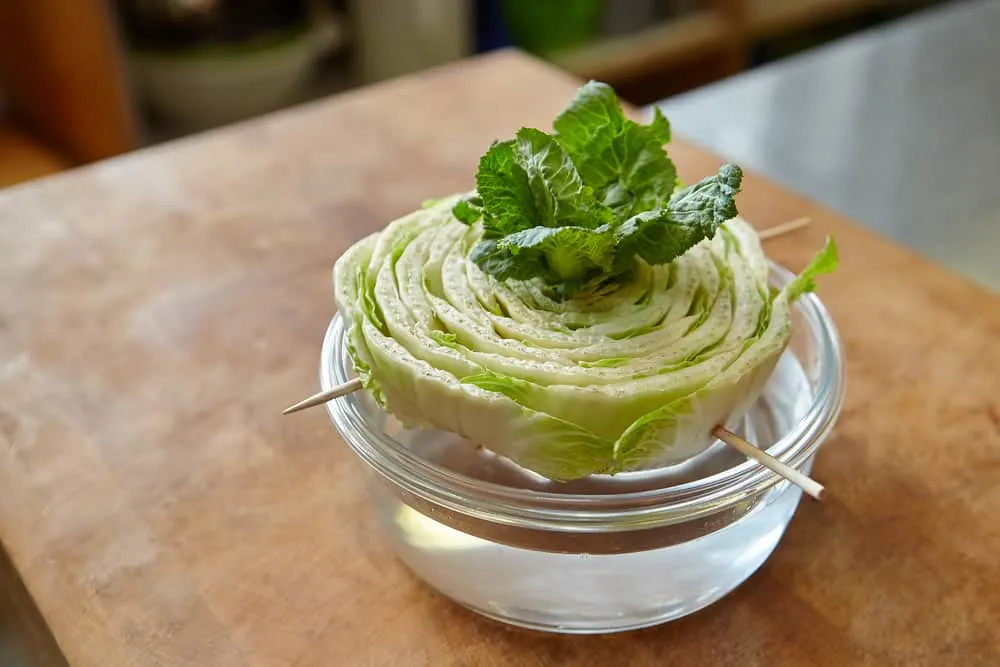
Bear in mind that many lettuces are cut-and-come again. You can often continue to harvest the plants as leaves continue to re-grow.
You can also re-grow head-forming lettuces and other leafy crops simply by retaining the rooting section, placing it in water, and waiting for a second flush of leaves to grow.
Finally, lettuce, bok choy and other leafy crops can also often be regrown from individual leaves.
Place the leaves in a bowl with a little water in the bottom. Keep the bowl in a sunny spot and mist the leaves with water every few days. Within a week or so, new roots should begin to form along with new leaves and you can transplant your new lettuce plants into the soil.
Re-Grow Cabbages
Some cabbages, like certain lettuces, can also re-grow while in the ground.
After cutting off the heads of headed cabbages, cut a cross in the base and leave it in the ground and a second head can often form.
Again, as with lettuces, cabbage bases and even cabbage leaves can also be enticed to re-root and form new plants.
Basil, Mint, Cilantro & Other Herbs
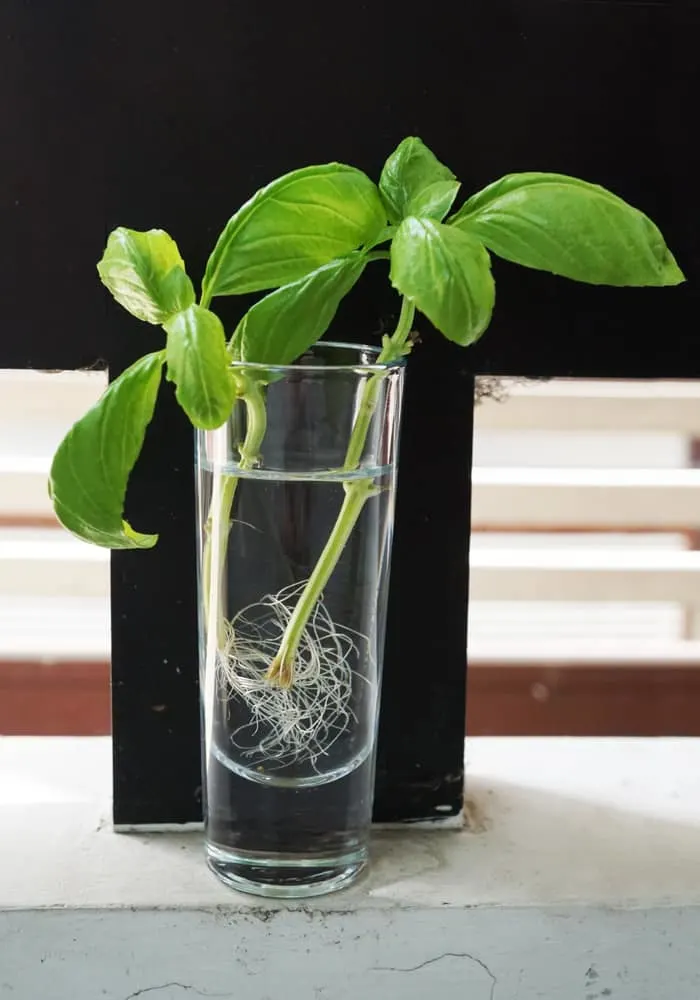
A wide range of herbs can also be re-grown using plant cuttings/ scraps.
Simply place a stem of around 10cm/ 4 inches long into a glass of water, making sure that the leaves are well above the water level.
Roots will soon begin to grow and as soon as the roots are growing well, these cuttings can be transplanted into containers, or directly into your garden.
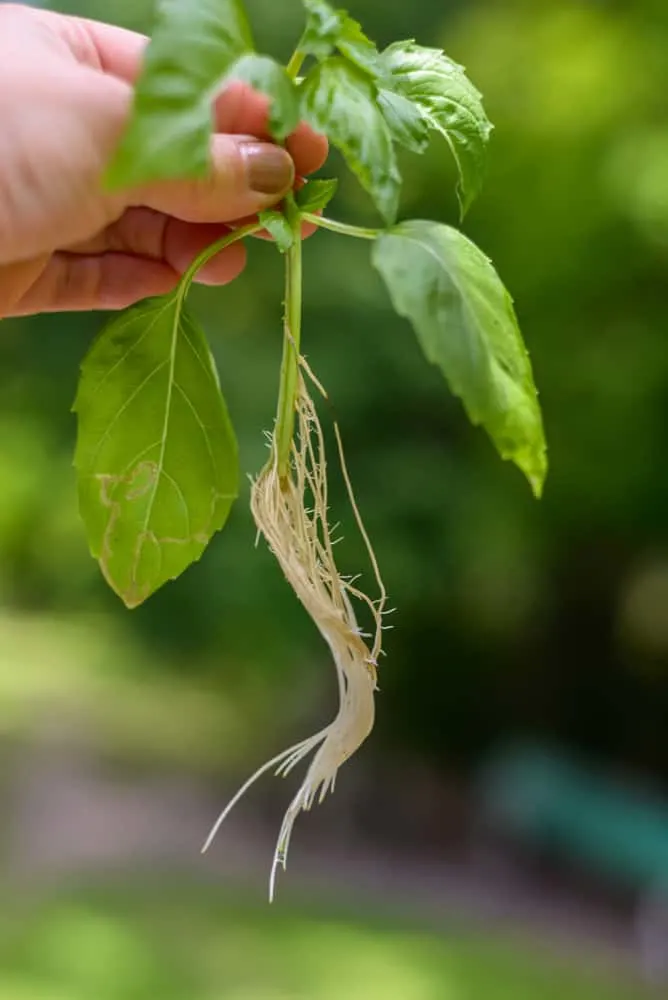
Read Next: 15 Herbs You Can Propagate From Cuttings
Re-Grow Vegetables (and Fruits) from Seed
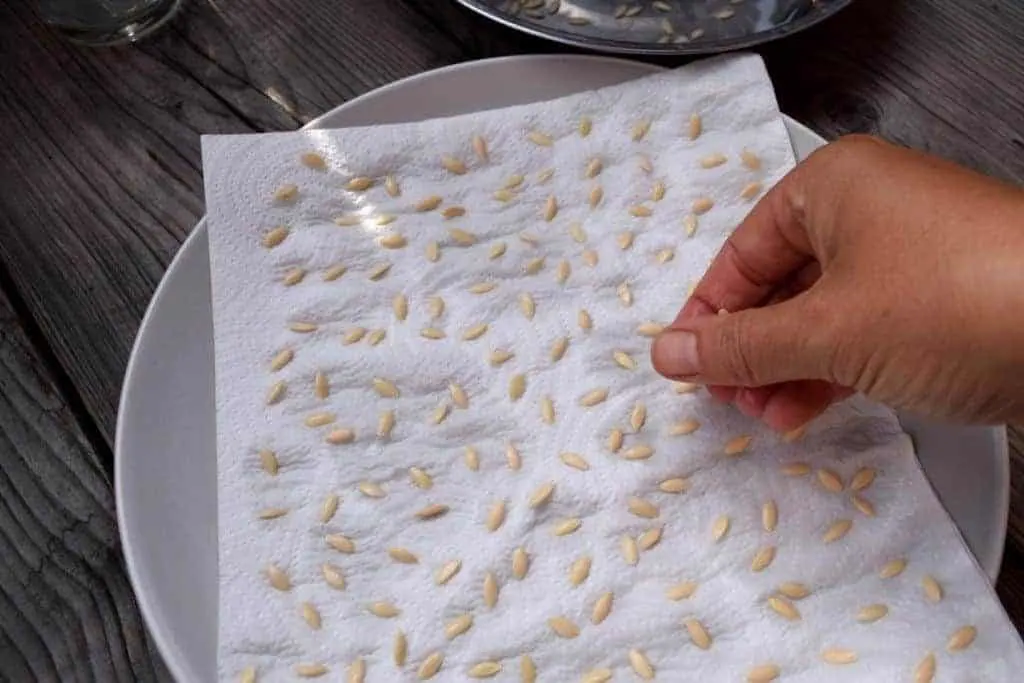
In addition to learning how to re-grow vegetables from scraps, it is also important to remember that you can also learn how to save your own seeds and sow these the following year to propagate your crops.
This is, of course, another important way to make sure that you make the most of everything that you grow and eat on your homestead.
Seeds should never be discarded. Some, you can eat along with the main edible yield from the plants in question.
For example, the seeds from your pumpkins and squash are delicious roasted and can be used, for example, as a stand alone snack, or to top dishes that are made with the flesh of the fruits. Here’s how to save pumpkin seeds for replanting next year and lots of different ways to use them.
Others can be saved and stored securely to plant next year. Some can also be sprouted right away.
For example, you could consider making some beansprouts, or growing some micro-greens on a windowsill to supplement your diet over the winter months.
Take a look at our tutorials for saving and regrowing tomato seeds, and saving cucumber seeds.
Make the Most of Secondary Yields
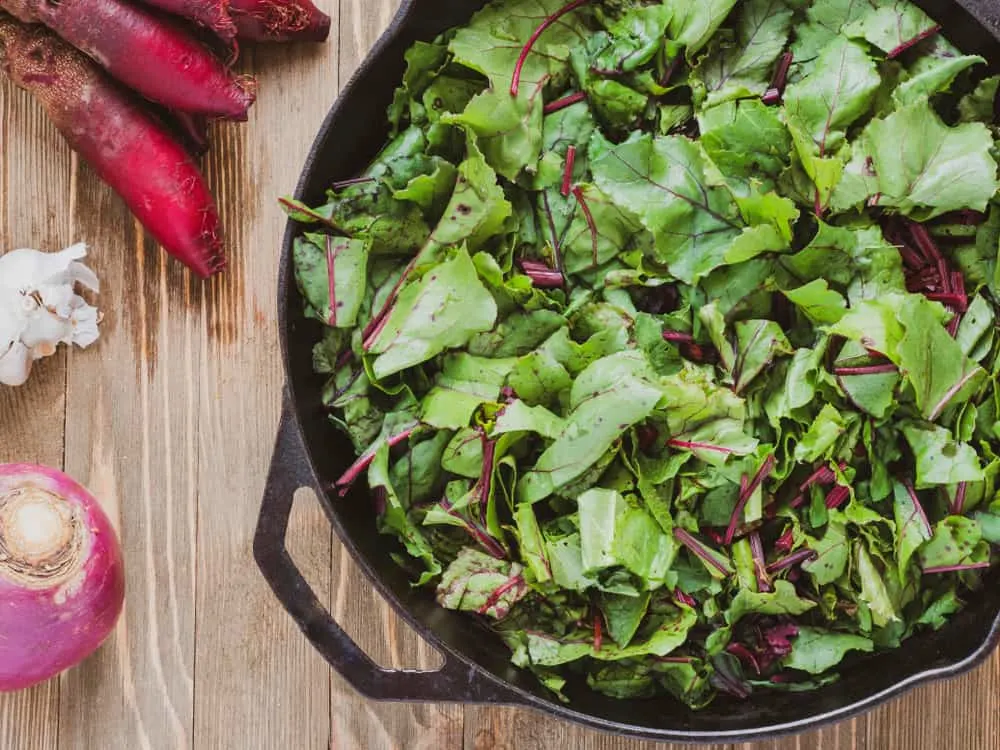
Another thing that can help you to reduce the amount of waste that you generate from your vegetable patch is make the most of additional yields that certain plants can provide. For example:
- Harvest and eat the leaves of root crops, in addition to their roots.
- Allow a few radishes to go to seed and harvest and eat the seed pods (and leaves).
- Eat the leaves and shoots of pea plants as well as the seeds and pods.
Making use of all the edible portions of a plant will help to make sure that no food is wasted and you make the most of all your harvests.
What To Do With Vegetable Scraps You Don’t Use to Re-Grow
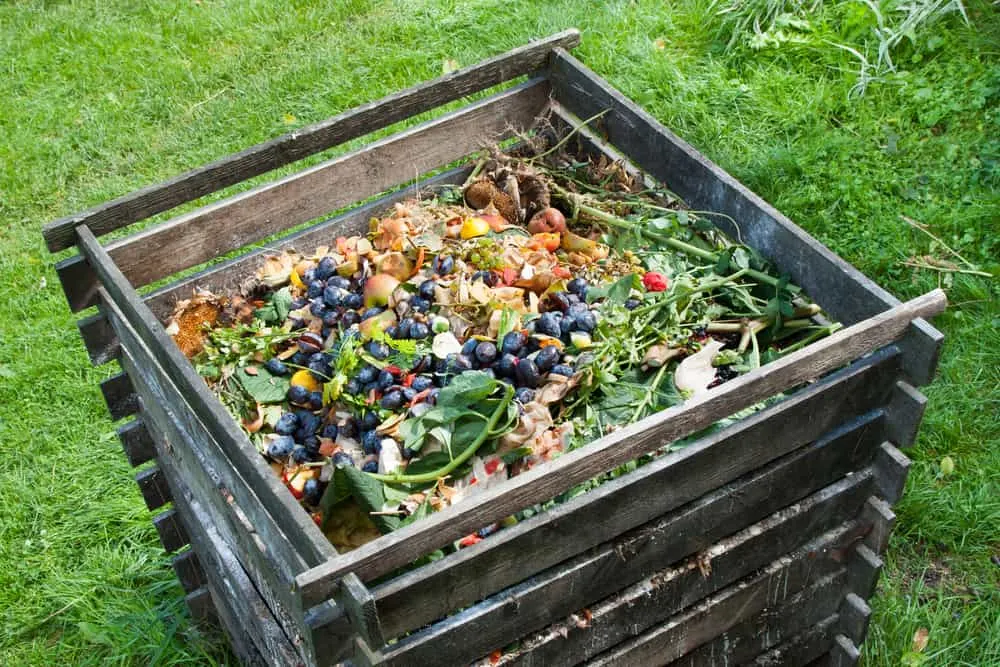
Food waste is a major problem in the world today. But when you garden, you can easily make use of all your vegetable scraps, and make sure that absolutely nothing is wasted.
Of course, the most obvious way to use vegetable scraps is to compost them.
Composting vegetable scraps is a great way to return their goodness and nutrients to the system. But before you send all those scraps to your compost heap, or place them in your wormery or compost bin, it is worthwhile thinking about other ways that you might be able to use them.
For example, you might want to use vegetable scraps:
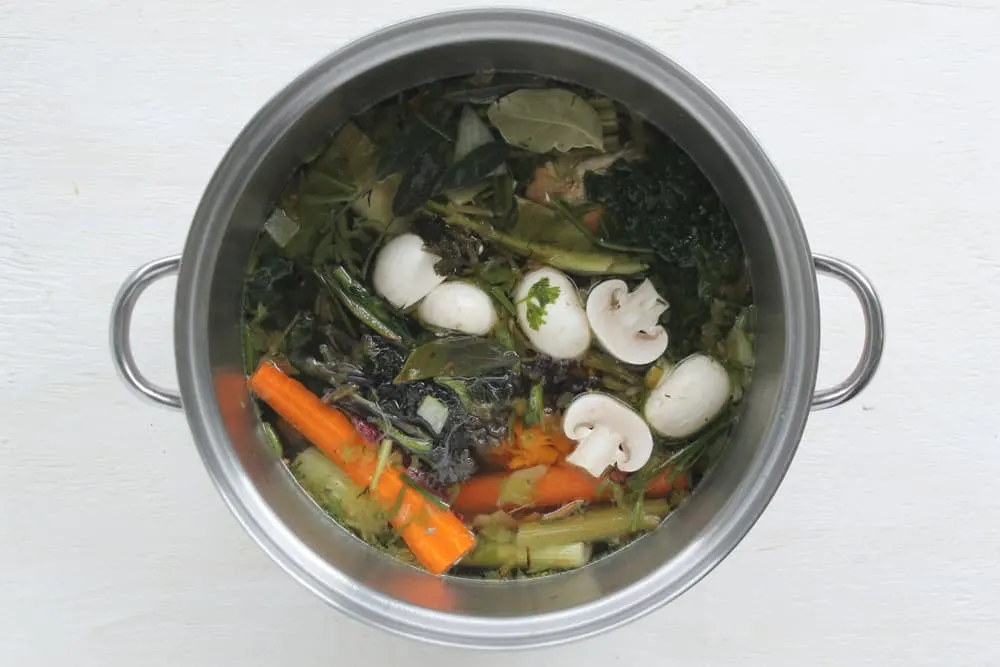
- To make a vegetable stock that can be used in a range of recipes.
- Keep an “Ugly Broth Bag” in your freezer
- To make natural, home-made dyes.
- As supplemental feed for livestock on your homestead.
The ideas listed above should help you to rethink the way you think about vegetable scraps.
You should be able to easily grow more food, save money, and move towards a zero waste lifestyle.
So before you just toss those vegetable scraps on the compost heap – think again. Think about all the additional yields that you could be missing out on.
Pin This To Save For Later
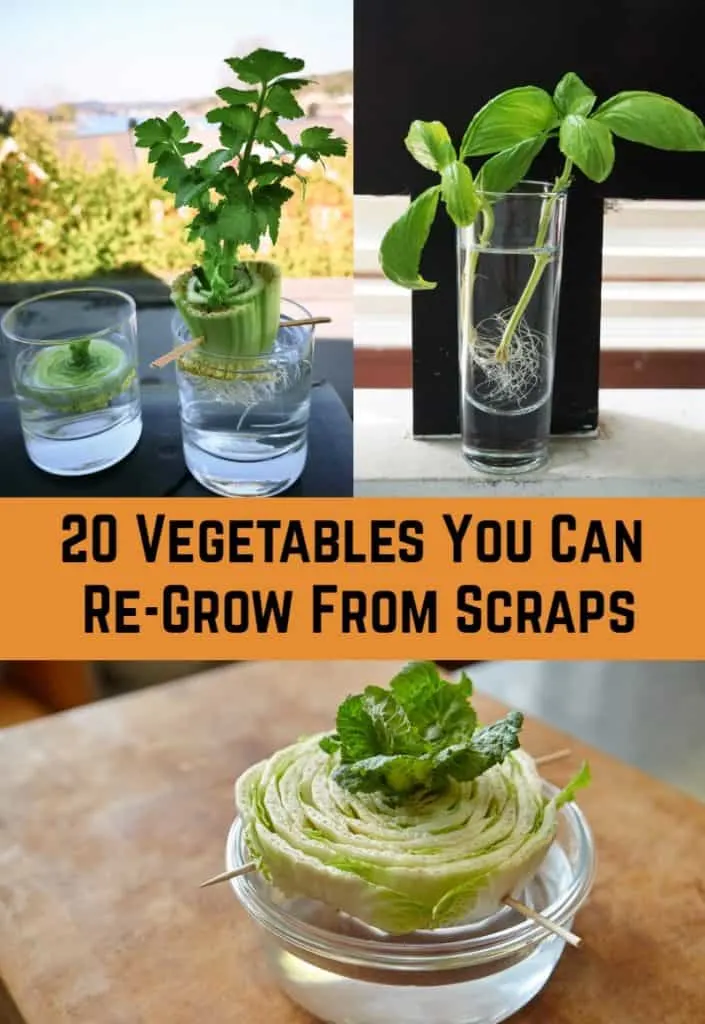

Get the famous Rural Sprout newsletter delivered to your inbox.
Including Sunday musings from our editor, Tracey, as well as “What’s Up Wednesday” our roundup of what’s in season and new article updates and alerts.


